#carbonated soda water plant
Explore tagged Tumblr posts
Text
Elevate your business with cutting-edge technology and expertise of the best Carbonated Soft Drink Plant Manufacturers in Ahmedabad leading the way. For more information visit: https://www.marutimacpack.com/
#Carbonated Soft Drink Plant Manufacturers in Ahmedabad#Automatic Carbonated Soft Drink Machine#Water Bottle Packaging Machine#Automatic Soda Soft Drink Packaging Plant Manufacturers#Carbonated Soft Drink Plant Manufacturers#Automatic Soda Soft Drink Packaging Plant
1 note
·
View note
Text
A continuation on my post about unloved foods, specifically this is my in-depth defense of root beer.
Root Beer isn't inherently gross, it's just one of those weird local flavors that's off-putting to people who didn't grow up with it. We all like different things and also we all tend to like flavors that are similar to what we grew up with. That's okay! But honestly root beer is pretty unique and, in my opinion, delicious.
One of the main complaints against root beer is that it tastes like medicine. Funnily enough, it was originally marketed as medicinal! This is true for most OG sodas actually. Pretty much as soon as carbonated water was invented, people were drinking it to soothe various ailments. A lot of the original soft drinks were actually invented by pharmacists. I just think that root beer is especially cool because the main flavor came from the root bark of sassafras, a common North American shrub. Because it's so widespread and aromatic, all parts of the sassafras plant have been used in food and medicine by many different Native American tribes throughout history and was subsequently picked up and used by European colonists. In the 1960s, some studies indicated that that safrole oil, which is produced by the plant, can cause liver damage. Whether or not this would actually remain true after it had been boiled and added to root beer is unclear, but it was really easy to replicate the flavor, so the sassafras in commercial root beer these days is artificial. Another fun fact about safrole is that it's a precursor in the synthesis of MDMA. None of this information has stopped my childhood habit of eating sassfras leaves right off the shrub whenever I walk past it on a hike. I'm like 85% sure it's safe and also mmmm yummy leafs go crunch.
Another root beer complaint is that it tastes like toothpaste. I think this is probably because another key flavor in most root beer recipes is wintergreen. I'm assuming that the people who think this are the same people who think mint chocolate chip ice cream tastes like toothpaste. I can understand and even respect that some people don't like mint and associate it only with brushing their teeth, but like. Mint is a pretty common flavor. I mean I think it's safe to say that humans have been eating mint flavored stuff for longer than toothpaste has existed... anyway!
Other common flavors in root beer (real or artificial) are caramel, vanilla, black cherry bark, sarsaparilla root, ginger, and many more! There's not one official recipe, and root beer enthusiasts often have strong opinions about different brands. Some root beer is sharper, with more strong aromatic flavors, and others are mild and creamier.
Another thing I think is cool about root beer is that it's foamier than most sodas. This was originally because sassafras is a natural surfactant (and why sassafras is also a common thickening agent in Louisiana Creole cooking.) These days, other plant starches or similar ingredients are added to keep the distinctive foam. Root beer foam > all other soft drink foams. That's why root beer floats kick more ass than like, coke floats.
If you've never had root beer before, imagine if a sweetened herbal tea was turned into a soda, because that's basically what it is. If your first response to that is a cringe, fair enough. That's why lots of people don't like it. If your first response to that is "interesting... I might actually like it, though" then I encourage you to track down a can of root beer today, hard as that might be outside the US and Canada. Next time you see an "ew, root beer tastes like medicine/tooth paste" take, know that there's a reason for that, but also the same could be said for literally any herbal or minty food/drink.
My final take on root beer is that it would be the soda of choice for gnomes. Thank you and good night.
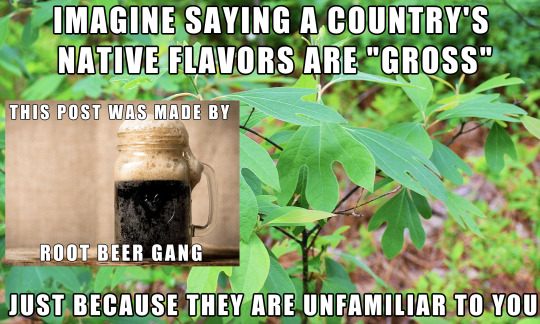
19K notes
·
View notes
Text
random pet peeve:
the odorless deadly chemical which can be in your house if you have a leaky stove or furnace is CO: Carbon Monoxide.
You have carbon monoxide detectors for that, because it's deadly and can build up without you noticing.
That deadly gas is NOT CO2. CO2 is Carbon Dioxide. You breathe it out, it feeds plants, it's what makes soda drinks fizzy.
So you don't usually have a "CO2 detector" in your home (they exist, though).
Now don't get me wrong: CO2 isn't super healthy either, but since humans emit CO2, we're pretty good at handling low levels of it. Too much of it will asphyxiate you, but that's super rare. It really needs to happen because of things like "nearby volcanic eruptions" and "deep lake water disruptions". Basically CO2 kills you by getting in the way of oxygen that you're trying to breathe in, and it kills you the same way any other gas does: you can't breathe in much oxygen if all the air is something besides oxygen.
CO (Carbon Monoxide), on the other hand, directly fucks up your hemoglobin. You breathe it in, and your blood starts carrying carbon monoxide around, rather than oxygen (in) and carbon dioxide (out). It basically suffocates you at the blood level, rather than the lungs level: You can breathe in all the oxygen you want, but if your blood can't move oxygen, you die.
This also bypasses the "I NEED TO BREATHE!" feeling. You don't notice that your blood is failing to move oxygen, you just get headaches, dizzy, nauseous, and confused, then die.
So, to sum up:
Carbon Dioxide (CO2): Relatively common, makes drinks fizzy, not dangerous unless there's a a ton of it. If you walk into a room full of CO2, you start choking because you can't breathe.
Carbon Monoxide (CO): Rare poisonous gas, comes from leaky combustion appliances, quite dangerous. If you walk into a room full of CO, you get a headache, act weird, then die.
1K notes
·
View notes
Text
How to DIY energy drinks for cheap
First, required reading: link to article
Energy drinks have a few vital components:
>sweetener
>flavor
>water
>caffeine
>bubbles (i never do that and don't know how)
Here are some of my favorite things to use:
>granulated sugar (sweetener)
>stevia leaf or granulated artificial sweetener (sweetener)
>kool aid (flavor, sweetener)
>loose-leaf herbs (flavor) (try hibiscus petal, chicory, even lemongrass and mint can be nice)
>lemon juice (flavor, preservative)
>kool aid (easiest flavor/sweetener combo)
Supplies you might need:
>kettle or pot for heating water
>tea strainer ball to keep your leaves out of the final product
>a nice ragu jar or old Gatorade bottle for pre-made stuff
>funnel for pourin
>ladle for scooping liquid into the funnel
Kaffn-8 or any other such liquid caffeine product will do you for caffeine. That brand is super easy and convenient. Kaffn-8 is my favorite for the quality and ease in dosing, as well as the value (15 bucks has lasted me 2 months of daily use).
I like to make a sugar-flavor concentrate, then assemble each glass as I need it. Sugar tastes better when melted with heat than when dissolved without heat, even once chilled. This also allows me to tweak caffeine content. Here is how to make it:
Fill tea ball with herbs (use about a handful or 1/2 cup for every quart of water, you're making it strong)
Heat water and pop the tea ball in
Simmer or keep hot for 10 min
Remove tea ball and turn off heat
While hot, add as much sugar as you had herbs, and mix until melted.
Mix in as much lemon juice (or other assorted acid or preservative) as you can stand. The more preservative, the longer it'll keep
Allow to cool enough to handle
Jar it up, put it in the fridge for later use. You can and should re-use all manner of bottle, just be wary of melting anything plastic or burning your hands w hot water.
A note: the smaller your batches, the less you waste. But high concentrations of acid and sugar keep it good for up to a month in the fridge.
To use: mix water in a cup with your syrup, tweaking concentrations until it tastes good. Add caffeine, measuring your dose carefully.
Then, do bubble magic to add carbonation if you can do that. Maybe you found a soda stream somewhere. If you don't have bubbles, you'll just have to enjoy your energy drinks flat.
And, you're all done!
Now, where to get everything:
(Grow your own herbs if you are mega brave. Mints are nearly indestructible little plants.)
Lemon juice, dollar store. Quality is the same, you've just got to shake it up.
if its a foreign grocer, they likely have herbs cheap. If its a Mexican grocery, they 100% have the best herbs. (Aguasfrescas drink mixes are cheap and THE BOMB, and hibiscus flower always comes in mega bulk) .
Herbalist and spiritual shops have herbs too, and are likely to have tea balls. Branch out! Catnip has been my favorite oddball herb.
Farmers markets also have some (like three if you're lucky) herbs, and you may have to dry them yourself. Since it's punk to reach out to your community, ask around at the farmers market to see if you can get any herb or dried flavorant that's on your mind- small businesses love consumer feedback! You just might have to wait for the plant to grow, heh, but if you're friendly then you'll make friends. Some examples: ask the jam bottler for dried fruit peels, the farmer for mugwort
I get my artificial sweeteners on closeout, my stevia from herbal shops, and my sugar at Walmart (bite me, its cheap and I'm poor).
Kaffn-8 can only be found online, as far as I'm aware. I promise I'm not sponsored, just a grateful caffeine addict.
Do Google your herbs for drug interactions if you take meds. Healthline has good info on herbs. Dried grapefruit rind can mess with my psych meds, for example.
Again, be careful about caffeine. Always dose your caffeine. Having high levels of caffeine on tap is a bit of a big responsibility: I know I nearly bit the dirt from the all-you-can-eat espresso bar at my college. Immaturity could kill you, caffeine is a drug. Count doses, never go above 500 a day, try not to go more than 200 in the same hour.
Now take that money you've saved and give it to a charity to blow a very mean raspberry at nestle. Or, yknow, feed yourself. Its a tough world.
76 notes
·
View notes
Note
Proposal based on your food post and some things in Fallout.
:readmore:
Homemade sodas and sweet drinks are incredibly common based on home recipes passed down through the generations.
In Fallout new Vegas, and in Fallout 4 you can make drinks such as Nuka-Cola.
Filtering water and making it drinkable will be a big priority wherever you go. But making it palatable will also be a big goal.
Local settlements will probably mix sweeteners like syrup, juices, or even honey to mix it in the water.
Tea will be very popular too with all kinds of local teas made from local plants, sweetened with local sweeteners, and traded or even sold to each other.
Tea has the advantage of being boiled, filtered, and flavored making it a popular drink with massive variants between region to region and even settlement to settlement.
Brahmin milk will have a lot of nutrients and apparently good for treating radiation so odds are its also used as a medicine and a big part of a lot of diets.
Some rare drinks may still be possible but take a lot of work such as coffee, and ice cream.
Coffee needs specific growth and a lot of space to grow. So maybe it'll grow in small quantities.
There's ways to make ice cream without machines but it takes a lot of salt, ice, and milk. So you'd have to be very wealthy or very well located to have it
Shaved ice with simple syrups and fruits may make good treats in areas where there's a lot of ice
I fully agree with all of this! Not including it was probably a bit of an oversight on my part, but this is exactly the kind of extrapolation and worldbuilding I was aiming for.
Soda was invented in the mid 1800s, so I don't think it's beyond the realm of possibility for people to have reinvented soft drinks. Originally, the water was taken from springs that were naturally carbonated and today, we can do it at home with compressed CO2. Even if the drinks aren't carbonated, I totally believe and agree with the idea that they're making sweet drinks.
I was going to mention in the original post and forgot, but lemons? Those things totally still exist. Citrus is too much of a botanical freak not to have survived. It might not be lemons (or limes, or oranges) as we know them, but they are OUT THERE and that means lemonade is real.
Tea is canon within the realm of fallout because you can brew several different varieties in 76. Also, hot drinks are comforting, especially in the winter and I think it's totally reasonable to think that new brews have popped up with the addition Coffee grows in Mexico at a similar latitude to Florida and parts of the southern united states, so I think you could claim that certain strains have been cultivated and grown in those areas, though it might be rare and extremely expensive.
Ice cream's origins are known to reach back as far as the second century B.C., although no specific date of origin nor inventor has been undisputably credited with its discovery. We know that Alexander the Great enjoyed snow and ice flavored with honey and nectar. Biblical references also show that King Solomon was fond of iced drinks during harvesting. During the Roman Empire, Nero Claudius Caesar (A.D. 54-86) frequently sent runners into the mountains for snow, which was then flavored with fruits and juices.
Ice cream is one HUNDRED percent a thing in the wasteland. The milk and cream is easy to source from Brahmin milk. Cane sugar can be grown in Florida and Louisiana, so it's not unreasonable to think that that's another rare and expensive import. It would be easier and cheaper to get your sugar from tree sap or malt grain or reduced fruits, but cane sugar is out there. Making ice cream is a pretty popular thing for kids to do -- put some rock salt and ice in a bag with cream, sugar, and vanilla, and shake it until it freezes. On the coast, salt is probably pretty abundant, even if it's time consuming to harvest, but vanilla is probably one spice that nobody has access to in the wasteland.
Ice houses and cold cellars are probably pretty common in the wasteland, so ice could be available all year round. Plus, refrigeration is useful in the process of preserving foods rather than canning or bottling.
I think it's important to keep in mind that people are smart, and just because the bombs dropped, we didn't revert back to the stone age. The knowledge of canning, bottling, making jams and preserves, cold storage, curing meat, making cheese -- all that knowledge is old. Just because modern technology makes it easier doesn't mean people couldn't do it two hundred years ago. If the knowledge is lost, logic and human ingenuity will rediscover it eventually.
#fallout#kal talks#asks#meta#fallout meta#fallout food#i love this kind of shit i love it i love it#important addendum to my post!!!
172 notes
·
View notes
Text
I finally continued rewatching Dragons Rising part 1 & 2 and decided to put some of my thoughts I rambled to my friend
Episode 7 Mindless Beasts
Awww Wyldfyre and Lloyd
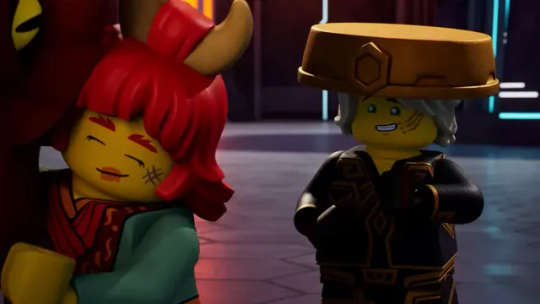
Rapton ����
At least he’s not sexist like the mechanic
Sora is so slay
She’s Girlbossing him

Nooooooo Sora (the dragon)

Riyu has been discovered rip
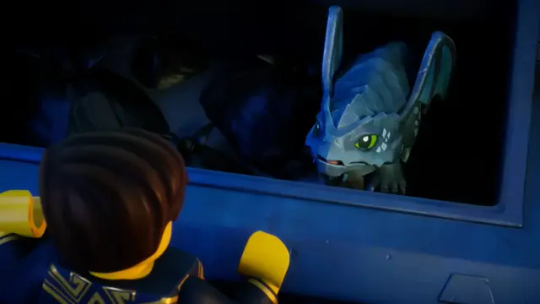
Episode 8 I Will Be the Danger
The beginning of I Will Be The Danger reminds me of lion king mixed with WALL-E lmao
Awww baby Wyldfyre

Wyldfyre has powers let’s go

Wyldfyre: Talk? Barf. Fight!

Lloyd looks horrified lol
Ghost Wuuuuuu

Percy how dare u

He’s just a baby
He’s a wittle dragon
Episode 9 The Calm Inside
Awww Arin and Sora are so cute together /platonic
They’re cute lil besties
Wyldfyre: Eat flame you buncha flame eaters!
Lloyd is being a dad to Sora rn
*gasp* Jordana
Raspberry shipping

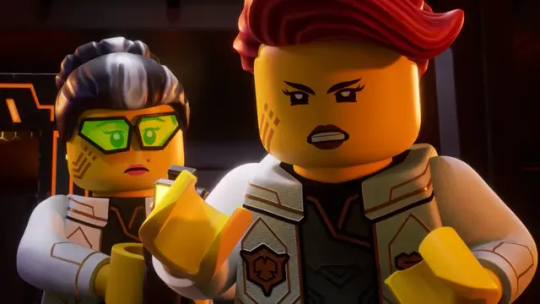
ZANEEEEEEEEEEEEEEEEEEEEEEEEEEEEEEEEEEEE

Say it with me: NINJA NEVER QUIT ‼️‼️

Episode 10 The Calm Inside
Not the baking soda volcano 💀
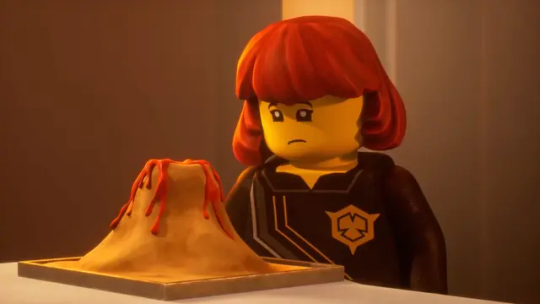
Conduit Lloyd lets gooo

Lloyd has seen the horrors
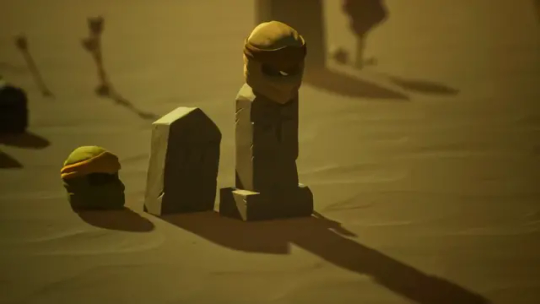
Zane caught Lloyd
The way he holds him carefully ;-;
(I couldn’t find a screenshot for that scene 😭)
That’s not sleeping Sora
That’s a coma
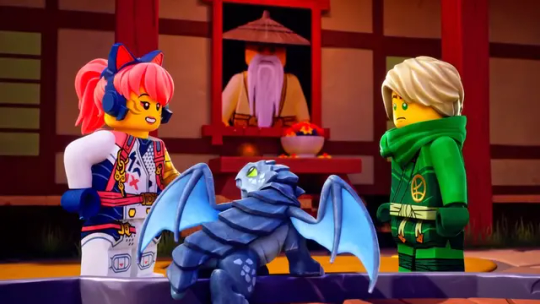
Arin and Lloyd bonding moment
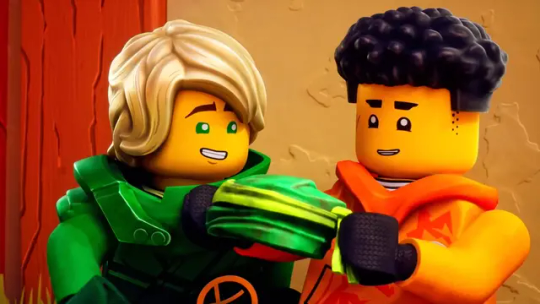
Onto part 2 woooo
Episode 11 Temple of The Dragon Cores
Mystake carbon copy (her voice anyway)

Noooo Gus

*Vibing to theme song*
Wyldfyre: My bathroom is everywhere!
Listen to the nindroid

Noooo Arin’s roommmm
Common Zane W
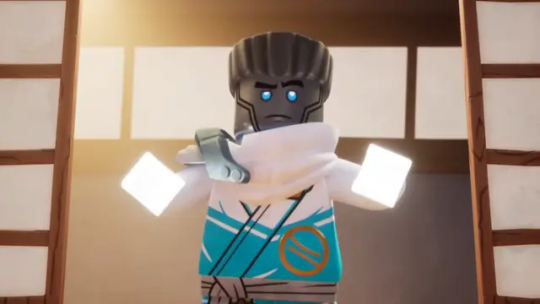
Lloyd: Watering the plants can wait
Sora’s parents ew

Percyyyyy my boy <33
Not the puzzle lock scene 💀🪦
Nya: “I think what my rude brother meant was we have a lot of experience getting into ancient temples.”
*flashbacks to Aspheera*
Rare Zane L

Rapton: dun dun duna dun dun I am sneaky man
Wyldfyre: This is impossible! Like trying to root out armpit parasites-
The fact the spirit that’s supposed to protect the temple just doesn’t protect it from Rapton…
So many dishes 😵💫
I forget they have a lot of people in the monastery
Lloyd, Nya, Kai, Wyldfyre, Arin, Sora, Zane
Episode 12 Gangs of Sea
Pixal mentioned ‼️
Kai: But, where will I sit?
Wyldfyre: The obvious place. Behind me.
Kai: but, I’m older!
Wyldfyre: Exactly. Behind me is a good place for an afternoon nap. Something someone your age needs.
Kai: I’m not that old and for the record naps are awesome!
Kai is such a dad
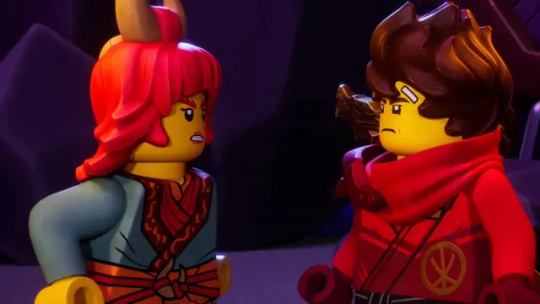
Awww Arin and Lloyd training moment
Arin *yeets plate out of existence*
Lloyd: Don’t worry. One less plate for me to wash.

Awwww
There goes the engine rip
Road rage Lloyd moment
Lloyd: How can they not see us? What kind of clown is flying that ship!?

Lloyd protec
Giant crab ew
I hate seafood
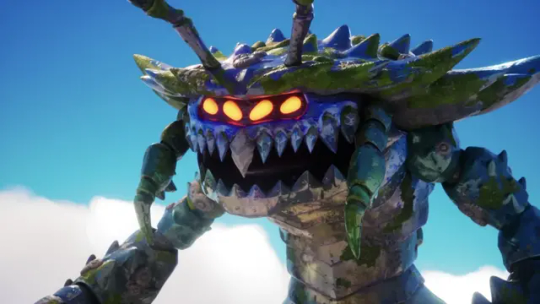
Arin: I promise this is gonna be good
Also Arin: This is gonna be bad
Poor little sneks
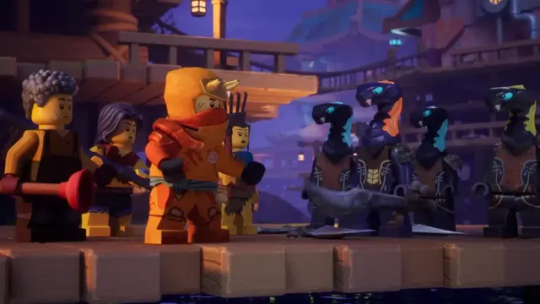
Had to choose some screenshots from the wikia ;-;
the little faces the ninja do are so funny lol
#lego ninjago dragons rising#Dragons rising spoilers#Ninjago spoilers#lego ninjago#arin ninjago#lloyd ninjago#raspberryshipping#ninjago dragons rising#lloyd garmadon#dad lloyd garmadon#Ninjago rewatch#kai ninjago#ninjago wyldfyre#i love her#ninjago#Spoilers for season one part 1 and 2
51 notes
·
View notes
Note
What do fairies eat
Fairies love eating plants! Lots of veggies and salads, plus random plants and leaves. It's a nod to both their insect DNA and the fact that a lot of Fairies shapeshift into animals, so some people think it's rude to offer guests animals to eat.
That said, small mammals are popular foods. There's a lot of bird-eating in my 'fics because, uh... birds don't fall off the edge of the clouds :')
Larger game such as deer do exist, but they're usually on Plane 7 (the Wanderplains) and the characters I write don't go there often (It's where Cosmo went when told to "get lost" in "Fairly Odd Baby").
?? I guess unicorns are technically game animals, but Fairies definitely don't hunt them for cultural reasons akin to Da Rules. Anti-Fairies don't have an issue with it, though... although in "Not All the Same," Anti-Wanda told Anti-Cosmo he looked more ruffled than a fruit bat on a unicorn's carcass, so take that as you will.
Binky and Jorgen indulged on a lot of sweet treats when they were disguised as humans in the "Swim" Prompt.
Anti-Fairies, who struggle growing nutritious plants in their world, eat a lot of meat, especially birds. The animals they can hunt aren't great since the leaves don't grow well without the sun, but they'll eat whatever they can get (Ex: Anti-Wanda's roadkill critter cake).
Prior the War of the Angels, the Anti-Fairies relied on the magical bottomless cauldron of the Dagda, which could spawn food, but Anti-Cosmo lost it during the war.
Fairies tend to eat fast and get out while Anti-Fairies settle in for large, long meals. A lot of Anti-Fairies struggle to get enough food (especially since their species doesn't need food to live, so sometimes people just skip meals and grow steadily weaker). The polite thing to do is offer food to a guest if you have enough to spare.
This is one of the things H.P. finds annoying... Anti-Cosmo (and his predecessor) always give him food when he visits, and their meals take forever.
It's worth noting that Anti-Fairies drink a lot of wine and Fairies drink a lot of water or milk. Canonically, Fairies get drunk/hungover from candy and soda ("Power Pals"), which I've always interpreted as sugar and carbonation, so these societies prefer low-sugar drinks as opposed to juice.
The "Shadow" Prompt depicts Hiccup (Foop's alternate personality) going to lunch with Anti-Wanda at a traditional Anti-Fairy dining establishment, where we see hints of their food-serving culture (youth deferring to elders, so Hiccup is taken aback when Anti-Wanda offers him the last scone against protocol).
We also learn there's a tradition that the High Countess, in honor of the very first High Countess who was paralyzed and fed by her partner, isn't allowed to touch certain foods with "hands, magic, or utensils" and is supposed to be fed by close kin, and no one can eat until she's done. Anti-Wanda is uncomfortable with all that attention and pressure, so she dodges that custom by eating with her feet.
Foop & Hiccup think their mum is so dang smart... They really look up to her and it's important to me <3
Pixies eat soy, plus a lot of grains like oatmeal and cereal. However, all pixies are deathly allergic to honeywheat (because they're clones of H.P.); there's an upcoming scene in Origin of the Pixies where Anti-Cosmo is mad at him and serves him honeywheat rolls at a special banquet. H.P. catches on and screws him over by going to eat the roll anyway, so Anti-Cosmo lunges forward in a panic to save his life... and is forced to admit to everyone he just tried to poison his friend.
The anti-pixies are based on fruit bats, so they eat a lot of fruit. I'm pretty sure there's a gingerbread cave near them ("Clash With the Anti-World"), but I forget right now if I have that next to the Pixies or anti-pixies in my worldbuilding.
The common fairy subspecies share their biology with dragonflies, which are carnivores. They have to eat meat, which Cosmo's great at doing!
From his teen years up, Poof punishes himself by cutting meat out of his diet as much as he can without dying. It's not healthy for him, but he started doing it after crashing Cosmo's car in "Repeat;" I love this scene:
"Hey, Poofster. Come out where I can see you. You know I'm no good at hide-and-seek." Poof slunk around the desk, and Cosmo drank him in for the first time. His whole face had brightened pinker than a plum. He clenched Dusty's wand between both hands, knees curled almost to his chest. Where had Dusty gone off to, even? Odd. With slow beats of his wings, he drifted over to where Cosmo floated above the tile. "I'm not really sure what happened here, but I'm kind of broken up about this, Poof. Darla was handmade and perfect. Replacing her parts year past year was super expensive for me. Now she'll have to be a magical car, and that's gonna cause a lot of problems on magical roads. We'll have to pay extra fees because of that and get extra license restrictions now. We can't drive her some places in the cloudlands, even to her favorite mountain spots. And never, ever take her to the lakes. How are you gonna fix it?" "I'm sorry! I won't drink your chocolate milk again for a century. I won't hang out with friends and I'll do all my homework and I'll do my exercises and shower every day and I'll never ask for extra curfew time for the rest of my life! And… and I'll give up eating meat forever! Even pepperoni!" Cosmo's eyebrows lifted. That seemed a little harsh, even if he had crashed the car. But when Poof ducked his head, he said, "Gee. Well, I guess I have no choice except to forgive you if stop snitching my chocolate milk. But how did this happen? I thought you were going to practice, so why were you in Serentip?" "It was an accident! S-someone ran right on in front of me, and I had to spin the car so I wouldn't hit them." Pause. That hadn't been in the report. Cosmo glanced sideways at the three fairies behind the desk, who all averted their eyes and pretended to be working again. "And… you ended up in Serentip on… accident." "Dad." Poof lowered his voice to something like a hiss. "This is embarrassing… Can we talk about this somewhere else?" But the paperwork. Even Fairy paperwork had its sluggish annoyances, and he had no pixie here to lend a hand. Cosmo massaged the small space between his eyes. Maybe he shouldn't have. After all, they were still in public and Poof had already asked he tone it down… but when the thought struck him, he couldn't choke it back. "Are you okay? Were you… buying peppermint?" "No! No way, Dad! I don't take mint; I'm a good kid." Poof's eyes filled with wetness, their saltiness stinging the energy field like dandelions whapping window glass. "It was just an accident!"
In "Approval," Foop complimented Poof for bringing "quality refreshments" to the school dance they were setting up, remarking that he'd thought Poof would bring something "weird" since he doesn't eat meat. In that Prompt, we find out Foop is ALSO censoring his meat-eating, but it's because he's embarrassed to let on to his betrothed that he likes chicken nuggets, so he eats salad instead.
And we learned that Fairies use magical bubbles instead of plastic or styrofoam for their to-go orders :)
Also, apparently I have Anti-Cosmo down in my notes as a French fry lover to parallel Cosmo's potato skin allergy (and because A.C. thinks salt is tasty). I think he and Hazel would really bond over that.
- Anti-Cosmo's actually vegan in my 'fics because Cosmo likes meat so much. He tends to push this on people around him, especially Foop, which Foop has issues with. Anti-Cosmo's wedding band is made of a non-leather material and he got excited in "Health Bars" when he was gifted a scarf that harmed no animals. - Fun fact, the silver-haired anti-habetrot who gifted him that scarf is Anti-Coriander (Foop's future betrothed), but this was when she was still a stranger. She's also the anti-habetrot who was monitoring Anti-Wanda's vitals in "You'll Never Know," also pre-betrothal. She's always been there...
Related:
What do Anti-Fairies eat?
Eating habits of each magical race
Social Ladder (Food weaknesses for all 35 Fairy subspecies)
#Fairly OddParents#FOP Poof#FOP Cosmo#FAIRIES!#ridwriting#Dragonfly parents#Purple hippie dragonfly#Nerdy blue fruit bat#Cilantro princess#130 Prompts#Sighs lightly. Tumblr's update to the new format wrecked the spacing of so many old posts. I should really try fixing the sideblog#but Take-Forever Day.......#asks#The bat with the hat#I'm wasp dad trash#We're Pixies!#Bat cube and associates#The best bat queen#Alternate bat prince
18 notes
·
View notes
Text
Moxie is a brand of carbonated beverage that is among the first mass-produced soft drinks in the United States. It was created around 1876 by Augustin Thompson as a patent medicine called "Moxie Nerve Food"[2] and was produced in Lowell, Massachusetts.[3] The sweet soda is similar to root beer, with a bitter aftertaste.[4] It is flavored with gentian root extract, an extremely bitter substance commonly used in herbal medicine.
Moxie was designated the official soft drink of Maine on May 10, 2005.[5] It continues to be regionally popular today, particularly in New England states.[6] It was previously produced by the Moxie Beverage Company of Bedford, New Hampshire, until Moxie was purchased by The Coca-Cola Company in 2018.[7]
The name has become the word "moxie" in American English, a noun meaning energy, determination, and spunk.[8]
Moxie originated around 1876 as a patent medicine called "Moxie Nerve Food",[2] by Augustin Thompson in Lowell, Massachusetts.[3] Thompson claimed that it contained an extract from a rare, unnamed South American plant, which is now known to be gentian root.[9][10] Moxie, he claimed, was especially effective against "paralysis, softening of the brain, nervousness, and insomnia".[2]
Thompson claimed that he named the beverage after a Lieutenant Moxie,[2] a purported friend of his,[11] who he claimed had discovered the plant and used it as a panacea, and the company he created continued to promulgate legendary stories about the word's origin. It likely derives from an��Abenaki word that means "dark water" and that is found in lake and river names in Maine, where Thompson was born and raised.[12]
22 notes
·
View notes
Text
youtube
#ecoprint #naturaldye #bundlesecoprint
The Secret of Ecoprint Technique (Full Tutorial) Part 1 • The Secret Recipe of E...
The Secret of Ecoprint Technique (Full Tutorial) Part 2 • The Secret of Ecoprint...
So hi, im roman, FINALLY todays video id like to show you the secret recipe how i made ecoprint on fabric, how i create a beautifull print on it, a secret why and how the leave or the flower leave their shape beautifully, this is base on my exploration, maybe the weather, ph level of water and so many factor will affect the result, but you can try this recipe.
This video is maybe long, but i dont want to cut the video so i will show you every step of the process of the textile making.
Step by step :
1. Choose the best fabric/materials
2. Clean the fabric (Scouring), i have 2 ways to clean deeply the fabric (2 method)
3. Preparing the fabric (Mordanting), 2 step to make your fabric is ready to dye.
4. Selection of the plants.
5. Bundles and Steam Technique.
6. I love you.
1. Fabric / Materials
The first is the most important before you making natural dyes, selection of fabric or material, because we work on natural dyes, natural things, so make sure the fabric that u ll be use is from nature also, like linen, cotton, or maybe silk.
2. Scouring
The second, is to scoured the fabric, what is scouring means? Scouring refers to thoroughly washing or deep cleaning the fabric, to remove residue or residual chemicals on the cloth from the factory when fabric making.
This is one factor of success in achieving strong color on natural dyes, is to start with completely clean fabric. Does this mean fabric washed in washing machine? No! We think the washer gets our clothes totally clean but it honestly does not. That is why, to get a good even coverage with your dyes, it is very important that you deep clean your cellulose fabric such as cotton, linen, bamboo, or maybe silk.
For me, this is my method, i have 2 ways to scour the fabric, the first is boil the fabric on hot water with some soda ash about 20 minutes, or if you dont have a soda ash you can use any detergent, but i recomend a soda ash and TRO (Turkish Red Oil). Boil for 20 minutes and ready for the next step, but if you patient enoght i have another tips, another methos, that is leave your fabric on soda ash mix with water for about a night or a couple night, until the fabric is clean and dry it.
3. Mordant
The 3rd step, next for this step is to mordant the fabric, what is mordant means? Mordant is like to prepare your fabric for natural dyes, mordanting process make your fabric good enought to sticking the tanin (the substance in plants that produces color/natural dyes) from leaves and flower. More rich the tannins on a plant, more strong the color will be.
There is 2 step of mordanting the fabric,
Mordant First step, recipe (you can re-adjust composition) :
Aluminium Sulfate (Tawas)
Iron Sulfate (Tunjung)
Baking Soda
Vinegar
Mix all the ingredients with water
Dry the fabric.
Note : be careful with fragile fabric like silk, dont add too much recipe
Mordant Second step, recipe :
Calcium Carbonate (lime betle/kapur sirih)
Mix with water
Ready to print or you can dry it and keep for print when you need. (Make sure make it wet again the fabric before you print)
For the precise composition please follow and dm me on instagram / roman.muhtar ✨
4. Selection of Plant
More rich the tannin on a plant, more strong the color will be.
What i choose :
Hibiscus flower (Bunga sepatu)
Bidens pilosa (Dom dom an/babadotan)
Acalypha (Daun Ekor Kucing)
Vernonia (Daun Afrika)
And many more you can explore
5. Bundles Ecoprint
Here‘s tutorial • Bundle Ecoprint Tutori...
6. Thanks for watching, i love you!!!
Lets be friend
Lets be friend
/ roman.muhtar
/ romannuansa
my work https://msha.ke/boolao
#Roman Nuansa#solarpunk#how to#how to eco print#how to bundle dye#eco print#bundle dye#diy#do it yourself#natural materials#natural fabrics#natural dye#Youtube
8 notes
·
View notes
Text
#bottling plant exporters in delhi#bottling plant in delhi#bottling plant suppliers in delhi#bottling plant manufacturers in delhi#bottled water plant suppliers in delhi#bottled water plant manufacturers in delhi#bottled water plant exporters in delhi#carbonated soda water plant#bottled water plant in delhi#carbonated soda water plant in delhi
0 notes
Text
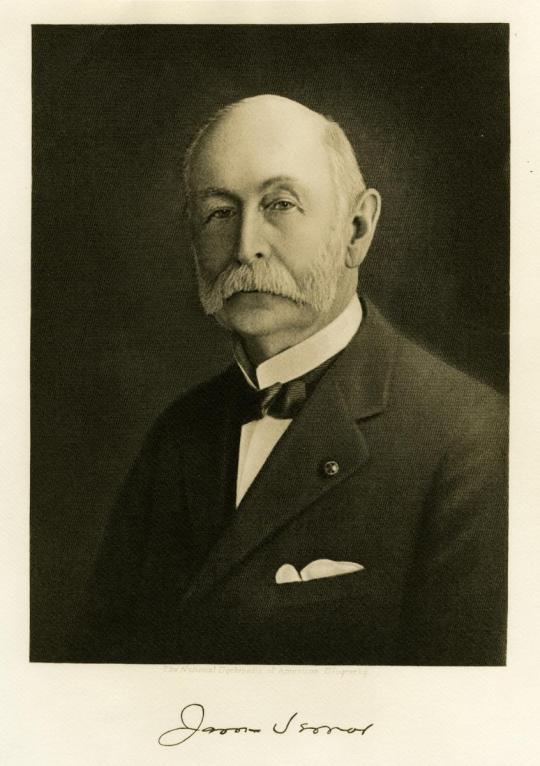
James Vernor was a junior clerk at Higby and Sterns’ Drug Store in Detroit when he enlisted in the 4th Michigan Cavalry and was called to fight in the Civil War. At the time (according to company lore), he was experimenting with a stomach calming tonic of vanilla, spices and ginger, which he left behind in an oak cask. When Vernor returned four years later, he found that his elixir had transformed into a zesty, sweet, gingery drink complimented by the wood’s aging process. Soon after, Vernor opened his own pharmacy 235 Woodward Avenue, and its soda fountain became the first – and only! – place in the world to buy Vernor’s ginger ale in 1866.
Vernor was admired as a pharmacist. He closely scrutinized his prescriptions for quality, accuracy, and possible drug interactions. Vernor was meticulous about his work. Everything he did needed to meet his high standards. He served on the State Board of Pharmacy for eight years and was one of the driving forces to pass the state's first pharmacy law. He held Michigan's pharmacy license #1 all the years he practiced.
Like all good pharmacists, Vernor also had a soda fountain in his drug store.
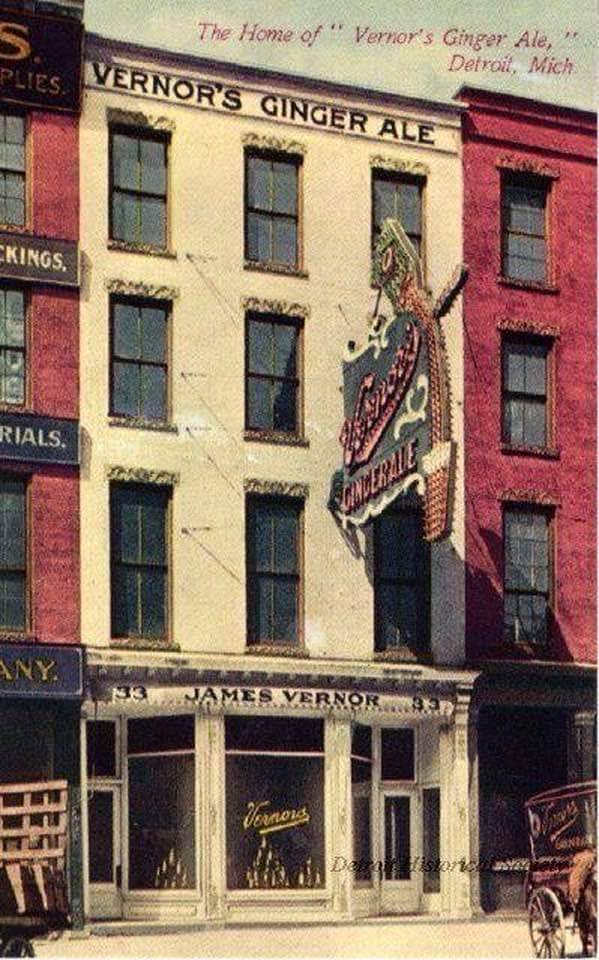
As demand grew, Vernor began to sell his product to other Detroit soda fountains, but required that vendors purchase special equipment to serve the soda in order to ensure its quality. After gaining enough fame, Vernor was able to sell his soda throughout the Midwest. In 1896, he closed his pharmacy and opened a bottling plant at the foot of Woodward so that Vernors could be mass produced.
James Vernor passed away at the age of 84 in 1927. The Vernor family was once asked when the first Mr. Vernor retired from business. The answer was, "A few hours before he died." He was a hard-working and energetic man. One that made his mark on the city of Detroit with both business and civic contributions.
The second James Vernor came into the business as early as he could, working alongside his father in the old drug store. In the beginning, the father and son team were the only employees. They often worked 16 hour days together washing bottles, making and bottling the ginger ale, delivering it to various sites in the city, and taking care of clerical duties. He was born in Detroit on March 25, 1877. It wasn't until his father died in 1927, though, that he became President of the James Vernor Company. It was in a great way due to the second James Vernor's influence and style that the company grew into an international organization. In 1896, James Vernor II entered the business and his father decided to concentrate full time on ginger ale.
The same standards that had been applied to the consistency of his prescriptions were applied to the consistency of Vernor's Ginger Ale. The water had to be specially purified. The blending needed the finest Jamaican Ginger distilled in the absolute proper proportion with other fruit juices. Even the carbonic gas used was produced by Vernor so it would meet their requirements.
In 1896, James Vernor II entered the business and his father decided to concentrate full time on ginger ale.
The drug store was closed in 1896 and a small plant established at the foot of Woodward Avenue, several blocks from his former drug store's location. The plant was devoted to the blending, aging, and bottling of Vernor's Ginger Ale.
In 1918, Vernor purchased the old Riverside Power Plant. In 1919 a six story main building was erected adjacent to the other two. In 1939, the 10-story Siegel building was purchased and renovated. In 1941, the "most modern bottling facility in the world" was completed at 239 Woodward Avenue.
The plant also had a spectacular soda fountain. Everyone who lived in Detroit in the 1940's and 1950's has a story about going to the Vernor's soda fountain, usually before or after a ride on the Bob-lo Boat. One of the favorite drinks to have was a Boston Cooler. The drink is a milkshake-like mixture of Vernor's and vanilla ice cream. Contrary to many incorrect web sites, the Boston Cooler is not named after Boston Boulevard in Detroit. At that period of time, any soda pop mixed with ice cream was called a Boston Cooler. So, you could have a Hire's Boston Cooler or a Vernor's Boston Cooler. Vernor's copyrighted the name in the late 1960’s.
James Vernor II had a son; another James Vernor. James Vernor III also had a son; James Vernor. Yet, the company did not pass on to either one of them. It is impossible to predict if the company would have remained in the family if either had been president. J. Vernor Davis, the grandson of the founder, took over the presidency of the company.
The James Vernor Company had always been a family owned company. The death of James Vernor II in 1954 forced the company to sell some stock to the public. In 1957, James Vernor III died. His majority ownership of Vernor’s went through a court battle and was ultimately sold to investors. As a result, Vernor’s was no longer in the hands of the founding family. Vernor's became Vernors in 1959. (Note the lack of the apostrophe between the 'r' and the 's'.)
Vernor Davis had been with the firm since 1931. Prior to the death of his uncle, he became president of the company, in 1952. James Vernor III was concurrently named vice president. Under Davis' leadership, company sales grew tremendously. A stockholder's annual report from 1963 indicates sales grew from just over $6,000,000 in 1961 to over $9,000,000 in 1963.
In 1966, the one hundredth birthday of the James Vernor Company, Davis became chairman of the board. That same year, Vernors was sold to another group of investors, members of the New York Stock Exchange. The company would soon go through a number of different owners.
Again in 1971, Vernors was sold to American Consumer Products. By 1979, another company, United Brands, owned Vernors. This ownership would be the one most costly to the City of Detroit. In January of 1985, Cincinnati-based United Brands abruptly ended bottling operations at the plant.
The property was purchased in 1986 by Shula Associates, who had plans to knock it down for a shopping mall. The plant was eventually demolished in 1987. A high-rise apartment building for Wayne State University is now on the Cass Avenue side of the site. On the Woodward frontage, a four story apartment complex with first floor retail space has been built. The property is directly north of the Whitney Restaurant and two properties north of Hop Cat Detroit.
Just two years after abandoning Detroit, United Brands sold Vernors to A & W Brands. All of A & W was subsequently purchased by Dr. Pepper/Cadbury in 1993. In 1996, Dr. Pepper/Cadbury merged with 7UP and moved to Plano. Cadbury continued to own Vernor's until stock holders made the candy company give up the beverage firm. Dr Pepper Snapple was born! The company merged with Keurig and is now Keurig Dr Pepper. The company has been very supportive of the Vernor's brand.
16 notes
·
View notes
Text
I somehow seemed to have forgotten the most obvious and important factor of photosynthetic humanoids (Vulcans)
They would breathe out oxygen and in CO2! Because that's an important part of how photosynthesis works!
Trees don't have lungs, I think they exchange the gasses through stomata (tiny leaf pores), but photosynthetic Vulcans are humanoid, the need (and have) lungs for more CO2 intake.
However, this could help explain their super-strength. If they can breath passively through their skin/foliage IN ADDITIoN to breathing normally, they constantly recieve much more CO2 than they actually need in order to be functional. So their blood is hyperoxygenated. Sorry, hypercarbonated. Frickin' soda pop boys over here.
Probably not really. Maple syrup isn't fizzy.
Anyway, WHAT IF THIS MEANS THEY CAN BREATHE UNDERWATER.
Think about it, could their foliage absorb CO2 from water? At the very least, they'd probabl--
Wait shit Vulcan is a desert planet.
I was going to say they could probably at least hold their breath longer than a human, and that if an individual started developing near water, and there were water-adapted flowering plants there, the alien bees could probably transmit that to the flowering acorn baby embryos, and it would get translated to their leaves having a secondary gill-like function, which would be REALLY cool.
The other thing is: if they primarily breathe in CO2 (and out Oxygen, and really mostly nitrogen for both but I mean functionally), how would they fare on a human ship? I've previously established solutions to all their sunlight needs, but human ships are designed primarily for humans, and while they could adapt a Vulcan's individual quarters to the proper air composition, it'd be a bit harder to adapt for most other areas.
Trees seem to fare alright, but also they don't have to take in enough energy to sustain movement and complex thought processes and all that fun stuff.
Having enough Vulcans onboard would probably conserve a lot of energy on Life Support functions, because Life Support would be more equalized towards both species, and then the humans and Vulcans would have a symbiotic relationship cycling the air from one species to another, without as much need for computerized air filters and stuff. The Vulcans would effectively be a walking airponics bay.
It gets a bit more difficult if you've only got the one, because Life Support would have to be optimized to suit the needs of the many, namely: humans. Maybe the output of CO2 from the humans would be enough, but maybe not. Maybe that's why they do meditation with so many candles! (Not really.) Hold on, googling something.
"When a candle burns, the hydrogen and carbon from the wax combine with the oxygen in the air to become carbon dioxide and water vapor." ~NY Times
Okay, GREAT. And they get more water!!
Solution: crank up the spooky awesomeness vibes to the max by surrounding Spock's station with old-fashioned candles. It's a bit underwhelming since he also needs more sunlight, so it can't really be dark and spooky and just candle-lit. Being surrounded by bright artificial lights sort of ruins it.
But you BET when they go to red alert and everything has to go dark? His lamps are suddenly dim red lights, primarily infared (which isn't the best for photosynthesis? But still has many benefits?) And suddenly the dozens of candles surrounding him are giving off ALL the best spooky vibes.
Imagine them hailing whoever's attacking them, and the assailants open up the video signal only to see a very dim bridge... And ONE VULCAN, LIT UP RED AND SURROUNDED BY CREEPY CANDLES, LOOKING MENACING AS F-CK
#star trek#photosynthetic vulcans#photosynthesis#photosynthetic humanoids#Spock#star trek the original series#star trek headcannons#headcanon#candles#spooky#dark aesthetic#what else can I tag this#oh yes#biology theorization#vulcans#speculative biology
14 notes
·
View notes
Text
Horseweed (I misnamed it horsetail on the stream, my apologies, there is also another plant with that name that I will post about as well!)
DISCLAIMER: ANY PLANT HAS THE ABILITY TO CAUSE ALLERGIC REACTIONS SUCH AS CONTACT DERMATITIS AND ALLERGIC RHINITIS. If you are allergic to a plant in the same family, it is advised that you use caution when handling and using the plant in question.
Firstly, what is it and what are the benefits of this fabulous plant? Well, this weed is commonly found across the Northern and Southern Americas and has spread elsewhere to places like Europe, Asia, and Australia. Thankfully along with its wide availability, it is also full of health benefits with a yummy taste included!
Some benefits include antibacterial, anti-fungal, and carminative properties (a fancy way of saying it helps relieve gas). Also, it treats diarrhea, hemorrhoids, and menstrual irregularities. An awesome bonus is that it is said to treat an array of skin problems including eczema, and ringworm, among others as well. This usage was found primarily in African cultures and (so far) I haven't been able to identify what properties aid the skin problems. [It also may be an effective way to treat herpes, boils, and bites but use with caution as I haven't found more detailed info on those claims.]
Recipes!!
Horseweed Tea:
The ratio of plant matter to water when making a tea is going to vary amongst what your overall preference would be as far as potency of benefits and flavor are concerned. A great idea is to fill a heat-safe container with the leaves and cover it with boiled water, steeping overnight. To get the most out of the plants, allow the hot mixture to cool at room temp before storing it in the fridge to steep overnight.
Horseweed Syrup:
For this, all you'll need is your previously mentioned tea mixture and sugar of your choice! Add a 1:1 ratio of sugar and tea to a pot and bring to a boil. From there, simmer it until it becomes your desired consistency.
If the syrup is added to carbonated water it will have a flavor similar to that of a combination of cream soda, Dr. Pepper, and root beer - BUT MEDICINAL!

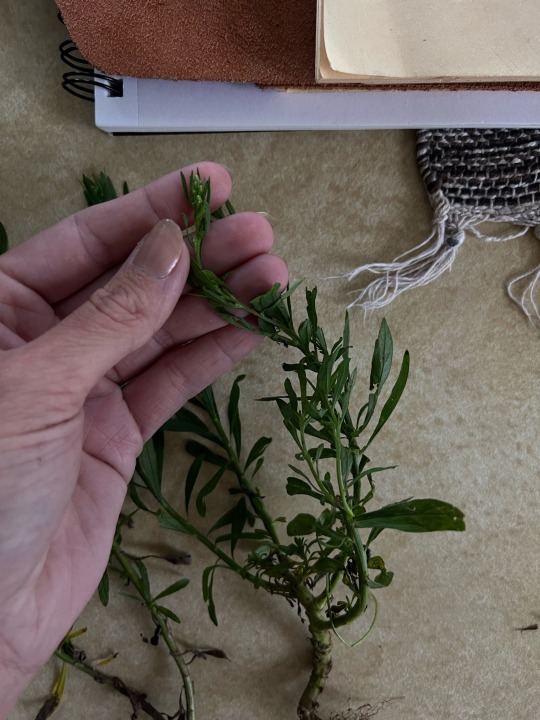
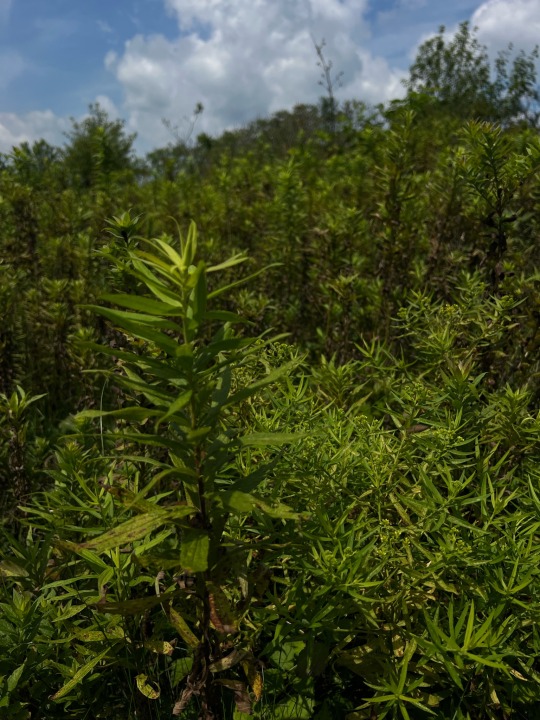
Sources:
Horseweed Sources
Benefits:
Medicinal Herb Info: Horseweed http://medicinalherbinfo.org/000Herbs2016/1herbs/horseweed/#:~:text=Horseweed%20is%20particularly%20suitable%20for,colon%20trouble%2C%20and%20summer%20complaint.
Illinois State Horticulture Center
https://horticulturecenter.illinoisstate.edu › gardens
Location:
UC IPM https://ipm.ucanr.edu/PMG/WEEDS/horseweed.html#:~:text=Horseweed%2C%20also%20called%20mare's%20tail,natural%20vegetation%20has%20been%20disturbed.
Recipe:
Taken from FB foraging group- I'm going to try to contact the OP for crediting purposes if she wants to be credited!(:
8 notes
·
View notes
Text
There's always an alternative.
Let's say you notice that you throw out your shampoo bottles, like clockwork, every month or two. They're plastic no. 3 bottles, and your local recycling plant doesn't actually recycle them, so they end up in a landfill. What do you do?
If you're really a fan of the standard pump model, or the squeeze bottle, then check your area for a store that has a refill bar. Your local salon may even offer this to their customers.
If that's not an option, check and see if there are any stores that sell shampoo bars. If there isn't a locally owned store that offers these products, there are chain stores like Bath and Body Works and Lush that certainly do, and there are larger chain stores like Walmart and Target that also offer these options. And, though it uses a lot of carbon, you can consider a delivery service.
If none of that works for whatever reason, you can look into making your own shampoo, or even your own shampoo bar. It may take some research to find a good recipe, and a little more to find the ingredients, but you can certainly do it.
If that fails, perhaps you don't want to spend the time, you can try out the no-poo method, which exchanges the traditional shampoo approach for a more natural one, utilizing apple cider vinegar, baking soda, or even just plain old water for a healthier scalp.
If none of those work, then you can circle back around. Can you try using half as much shampoo, and make sure the bottle is completely empty before tossing it? Perhaps you can keep the bottles until you travel to a city whose recycling program accepts that kind of plastic. Maybe you can find somewhere that sells your favorite shampoo in a larger size, so you are only creating waste every three months, rather than every thirty days.
This is just an example, but the point is, almost every waste-creating facet of our lives has numerous alternatives. If you're getting frustrated pursuing one, it's ok! Take a step back, and see if there's another approach you can take that might fit your lifestyle a little better. :)
8 notes
·
View notes
Text

The former Cherry Smash corporation in Arlington, Virginia. The site was initially known as the Consumer Brewery and was built in 1896 by Albert Goenner, a local architect who also oversaw the construction of the original county courthouse. Located near what was the old Aqueduct Bridge, it was a major purveyor of alcohol in the region during a time when Rosslyn was known for being a hotbed of criminality. From the 1880s to the early 1900s, people from the District and the greater Capital region would come over Arlington’s bridges to gamble and drink, most notably in Rosslyn’s saloons.
In 1904, however, nearly 50 of the saloons, bordellos, and gambling houses were shut down by Virginia Commonwealth Attorney Crandall Mackey, and Rosslyn’s salacious reputation began to wane. The same year, the Consumer Brewery reorganized and was renamed the Arlington Brewing Company and continued to produce beer for out-of-state sale until production was banned in 1918.
Cherry Smash soda was founded in 1901 by John E. Fowler in Richmond, Virginia. The company produced a cherry-flavored syrup that could be added to carbonated water or ice cream, and the drink gained early popularity amidst the rise of the soda fountain, earning the nickname of “Our nation’s beverage.” Throughout the early 1900s, there was even a Cherry Smash-sponsored amateur baseball team in the Richmond League.
The soda came to Arlington right around the time Prohibition went into effect. With a plan to move the company’s headquarters from Richmond to Arlington, Fowler purchased the Arlington Brewery in 1920 for $125,000 and converted it into a Cherry Smash plant (also referred to as the “Fowler Building”).




The history of the Cherry Smash soda, created and distributed in Arlington, Virginia.
#cherry smash#cherry soda#cherry flavor#🍒#history#prohibition#virginia#1900s#historic landmark#historic#vintage
3 notes
·
View notes
Text
The Beverages & Soft Drinks Market: Trends, Growth, and Insights
The Beverages & Soft Drinks Market is a dynamic and ever-expanding industry, characterized by constant innovation, evolving consumer preferences, and a robust global demand. From carbonated drinks to functional beverages, this sector plays a vital role in catering to diverse tastes and nutritional needs worldwide. The market has shown resilience and adaptability, driven by trends in health consciousness, sustainability, and premiumization.
Market Overview
The global Beverages & Soft Drinks Market has experienced significant growth over the past decade. With an increasing urban population and rising disposable incomes, the demand for convenient and refreshing drinks is surging. According to industry reports, the market is expected to grow at a compound annual growth rate (CAGR) of 4.5% from 2023 to 2030, reaching a valuation of over $1.5 trillion by the end of the forecast period.
The sector is segmented into carbonated soft drinks (CSDs), fruit juices, bottled water, sports and energy drinks, and functional beverages. Among these, functional beverages are gaining traction due to their perceived health benefits, such as boosting energy, enhancing immunity, and improving hydration.
Key Drivers of Growth
Health and Wellness Trends: Consumers are increasingly opting for beverages with lower sugar content, natural ingredients, and added nutritional benefits. This shift has led to the rise of products such as sugar-free sodas, plant-based milk, and kombucha in the Beverages & Soft Drinks Market.
Innovation and Product Diversification: Manufacturers are introducing unique flavors, sustainable packaging, and fortified drinks to appeal to a broader audience. For example, the infusion of botanical extracts and probiotics in beverages is a growing trend.
Sustainability Efforts: The market is embracing eco-friendly practices, including recyclable packaging and reduced water usage during production. These efforts align with consumers’ growing environmental concerns, further boosting brand loyalty.
Technological Advancements: The integration of advanced technologies in production, distribution, and marketing is enhancing operational efficiency and consumer engagement. For instance, smart vending machines and personalized beverage options are shaping the future of the Beverages & Soft Drinks Market.
Regional Insights
The market's growth varies across regions, with Asia-Pacific leading due to its large population base and rising middle-class segment. Countries like India and China are witnessing increased consumption of packaged drinks, driven by rapid urbanization and improved retail infrastructure. Meanwhile, North America and Europe remain key markets, focusing on premium and organic beverage offerings.
Challenges
Despite its growth potential, the Beverages & Soft Drinks Market faces challenges such as stringent regulatory norms, rising raw material costs, and increasing competition. Additionally, public concerns over health issues related to sugary drinks have led to declining sales of traditional carbonated beverages in some regions.
Future Outlook
The future of the Beverages & Soft Drinks Market lies in aligning with consumer preferences for healthier, sustainable, and innovative products. Brands that invest in research and development to create differentiated offerings will gain a competitive edge.
In conclusion, the Beverages & Soft Drinks Market is poised for substantial growth, driven by consumer-centric strategies and a commitment to sustainability. As the industry continues to evolve, it offers immense opportunities for businesses to innovate and thrive.
#Beverages & Soft Drinks Market#market research#market research reports#market analysis#market growth#market insights#digiroads
0 notes